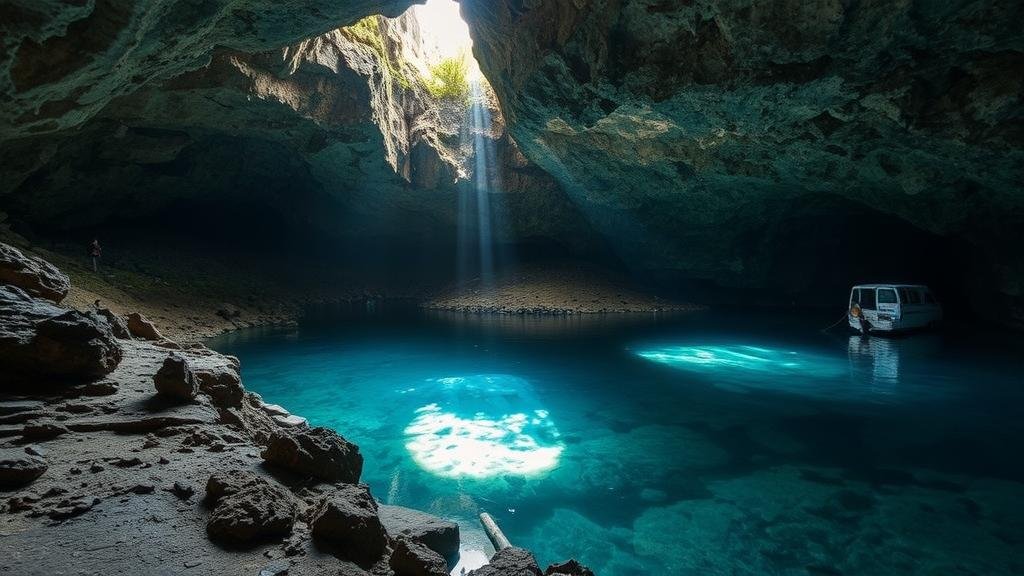Documenting encounters with enigmatic cave ecosystems untouched by sunlight.
Documenting Encounters with Enigmatic Cave Ecosystems Untouched by Sunlight
The exploration of cave ecosystems has fascinated scientists and adventurers alike for centuries. These subterranean environments, often devoid of sunlight, host unique and intriguing species that have adapted to extreme conditions. Documenting these ecosystems not only advances our understanding of biodiversity but also raises crucial questions about ecological balance, conservation, and climate change.
The Unique Environment of Cave Ecosystems
Cave ecosystems are characterized by limited light, high humidity, and a stable temperature range. e conditions make them one of the most isolated habitats on Earth. For example, the Carlsbad Caverns in New Mexico, a UNESCO World Heritage site since 1995, showcase stunning limestone formations and house numerous unique species. According to the National Park Service, the caverns contain over 119 species of animals, many of which are troglobites – species that have adapted to life in complete darkness.
Cave Adaptations and Biodiversity
Species inhabiting cave ecosystems exhibit remarkable adaptations for survival. For example, organisms like the Texas blind salamander (Eurycea rathbuni) possess translucent skin and lack functional eyes, relying instead on heightened senses of touch and smell. Similarly, cave-dwelling fish, such as the blind cave fish (Astyanax mexicanus), have evolved over millions of years to navigate in darkness, developing enhanced lateral line systems for detecting water vibrations.
- The average temperature in many caves remains stable between 50 °F and 60 °F (10 °C to 15 °C).
- Studies indicate that up to 10,000 caves exist in the United States alone, offering a diverse range of ecological niches.
Historical Context and Exploration
Human exploration of caves dates back to prehistoric times, with evidence of human activity found in the Altamira Cave in Spain, famous for its ancient rock paintings estimated to be around 36,000 years old. Modern research, however, began in earnest in the 19th century. discovery of the Lechuguilla Cave in New Mexico in the late 1980s marked a significant milestone; it is one of the deepest and most biologically diverse caves in the world. Research conducted there has revealed previously unknown microbial species that thrive in nutrient-poor environments.
Current Research and Conservation Efforts
The scientific community continues to investigate these mysterious worlds to better understand their ecological dynamics. Advancements in imaging technology and environmental DNA (eDNA) sampling employed to document biodiversity in caves. For example, a study published in 2020 in the journal Nature Ecology & Evolution utilized eDNA to uncover new species in the Phantom Cave of Tennessee.
- The use of eDNA can provide insights into species presence without the need for physical specimens.
- By focusing on remote and untouched caves, researchers can create baseline data crucial for future conservation efforts.
Challenges Facing Cave Ecosystems
Despite their resilience, cave ecosystems face significant threats due to human activity and climate change. For example, pollution from surface agriculture can seep into groundwater, altering the delicate balance of cave microhabitats. Also, tourism, if not managed correctly, can disrupt these fragile environments. Caves of Agia Sofia in Greece have seen increasing tourist footfall, raising concerns about the long-term viability of their unique ecosystems.
Actionable Takeaways for Future Exploration
To effectively document and preserve enigmatic cave ecosystems, consider the following approaches:
- Engage in ethical caving practices, ensuring minimal environmental impact while exploring.
- Support local and global conservation initiatives aimed at protecting cave habitats.
- Participate in citizen science projects that facilitate data collection and monitoring.
In summary, documenting encounters with enigmatic cave ecosystems is not just about exploration; it is a pivotal endeavor that contributes to conservation and enhances our understanding of life on Earth. Continued research and commitment to preserving these untouched environments will play a crucial role in safeguarding their unique biodiversity for future generations.



